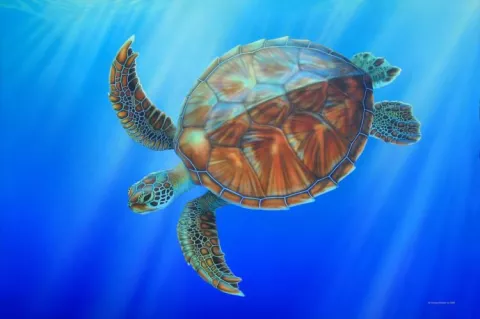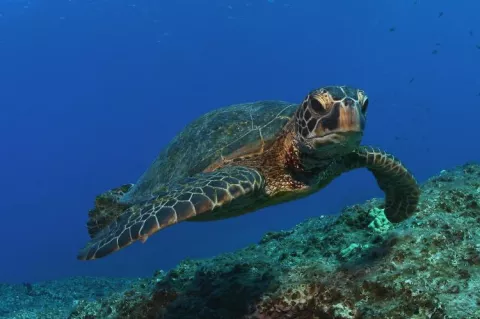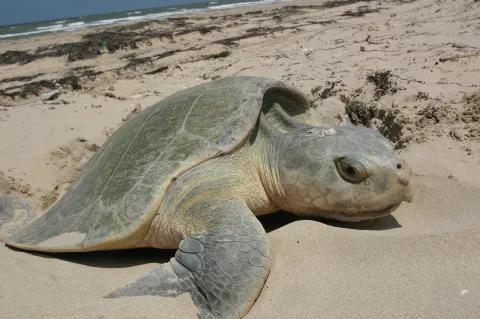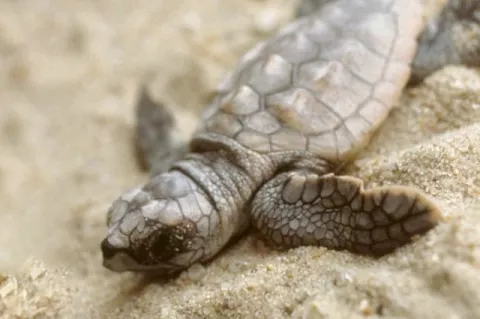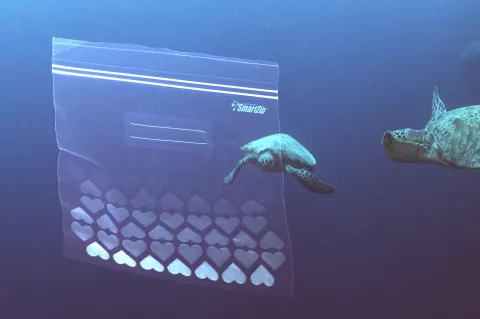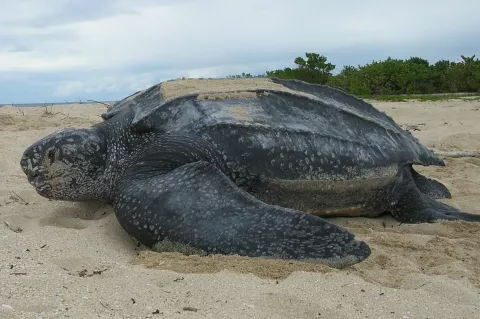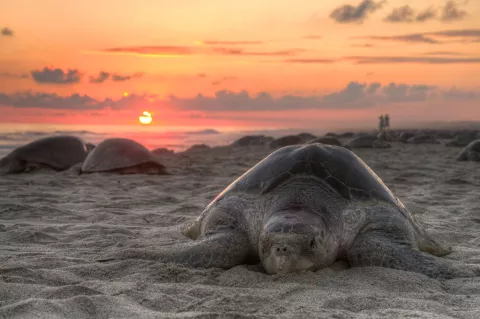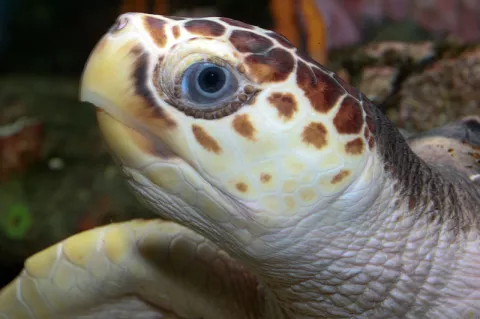Merlin's Sentience: The Story of a Sea Turtle
Sighting a sea turtle on a dive is always a pleasure. However, few know much about what they are like as animals. Being reptiles, it is assumed that they are essentially on automatic—emotionless and thoughtless. But we changed our minds about that when Merlin came. Ila France Porcher relays the tale of rehabilitating a sick sea turtle in Tahiti, at a time when turtles were often hunted for food.

